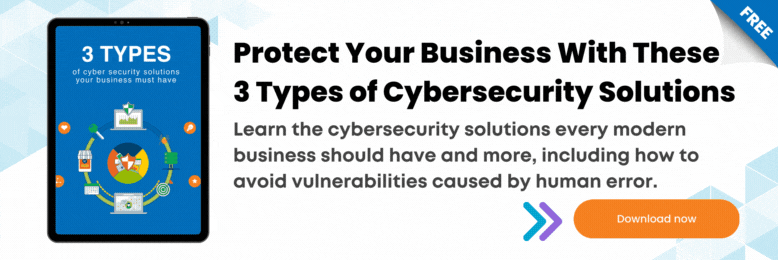
Managing an entire business's IT infrastructure can be a daunting task. But, you don’t need to be a tech master to improve your protection from a malware attack. Following a few simple procedures can drastically improve the chances of coming out on top after a technological breach. So here are 7 steps your business can take towards IT security.
1. Security Awareness Training

This is the first step to making sure the entire team is on the same page. Security awareness training is the first tool needed to protect a business. Human errors are used more than technology to get into a system. Making sure that staff understands common phishing tactics, suspicious web pages, insecure logins, USB awareness, and more can save your business from an attack.
Hackers rely on uninformed people to make a mistake. We believe that the best first step isn’t having the best tech, but instead by beginning to give your team the knowledge to avoid mistakes in the first place.
2. Firewall Protection
A firewall is your first line of defense, after your human response. This defensive wall helps to block harmful programs from entering your system. It filters out what is suspicious from entering your private servers and helps keep bad programs out.
3. Scans on the Firewall

Open ports in firewalls are far too common. The Coronavirus pandemic has pushed more people to work remotely than ever before. The process of opening a remote link to connect everyone to the office can leave gaping holes in your IT security. Just because you have a firewall does not mean that it’s safe.
Automated programs search all over the web looking specifically for these open ports in firewalls. It only takes one opening for a hacker to get in and start chipping away at your security.
Closing ports in your firewalls is a free or relatively cheap process that you can go through that will drastically improve your IT security.
4. Anti-spam on Email
Extra protections on email can be vitally important. One of the most common phishing tactics is to send out misleading emails that look like they’re from a trusted source. Good scanning on emails can help stop emails used for ransomware and malware attacks.
5. Anti-virus, Anti-breach, Anti-Malware installed on your system

Each one of these software types helps filter different things. Anti-virus can help stop infections from spreading and infecting additional files. Anti-malware helps fight against the malicious programs on your computer and alerts you when attacks begin.
Anti-breach is a newer type of software that can help look for programs in the background that allow hackers to enter your system. This is the software that allows people to look through your system and plan attacks that will hurt you the most. If you can spot this software before an attack happens then it can help you respond before it’s too late.
6. Utilize Two Factor Authentication
This is probably the easiest and most helpful, way to keep your passwords safe. Two-factor authentication (2FA) is used so when you log in to something you will get a message somewhere else to confirm that it was, indeed, you.
This is a tremendous help when people want to get into your account. You will be notified if someone who is not you tries to log in, and it can help make it much harder for them to worm their way in. Two-factor authentication is something that every office should be using to keep their data secure.
7. Work with a trusted MSP

Managed Service Providers are available to help you do everything above and more. A good MSP will make sure that everything listed above is part of your IT support, while constantly checking to make sure it’s all working the right way.
An MSP keeps you updated on your system and manages the security so you are always aware of the changes. Just implementing the advice above will help you, but having a team to monitor and manage your data boosts your safety immeasurably.
Contact us today to learn more about how we can help with the data management need for your business.
Topics: